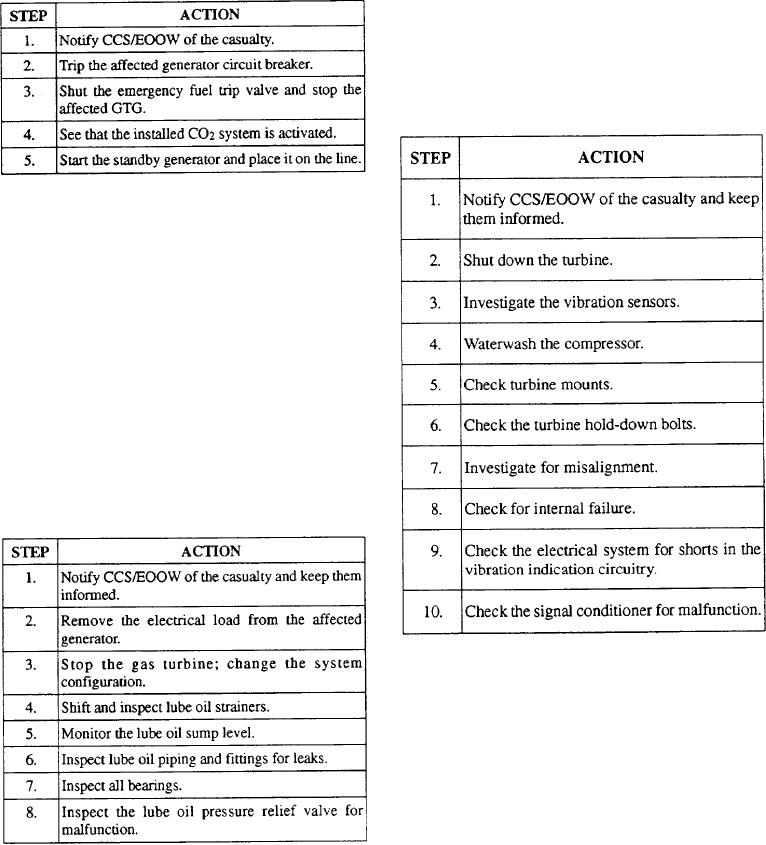
Once the cause has been identified and corrected,
Once all procedures have been carried out and the
the unit should be tested according to your ship's EOP.
reason for the casualty has been identified and corrected,
start and test the affected GTG according to your local
EOP.
PROPULSION GAS TURBINE CASUALTIES
Class B Fire in the Gas Turbine
Propulsion gas turbine casualties are treated in
Generator Module
much the same as casualties to the GTG.
When a class B fire is discovered in the GTG
module, the following actions should be taken:
Excessive Vibration
Excessive vibration can be caused by a number of
things, including internal part failure, misalignment,
faulty turbine mounts, or bent high speed coupling shaft.
Once excessive vibration is indicated, the following
actions should be taken:
Quick action on the part of watch standers can avoid
the loss of the GTG and prevent reduced electrical
capability.
Loss of Lube Oil Pressure to the Gas
Turbine Generator
A loss of lubricating oil is one of the most serious
casualties that can occur on rotating machinery,
especially machinery that rotates at very high speeds. A
loss of lube oil can be indicated by the following:
1. Below normal lube oil pressure to bearings
2. Audible and/or visual low lube oil pressure
alarm
3. High bearing temperature alarm
Once a loss of lube oil casualty has occurred, the
following actions should be taken:
Once the cause for vibration has been identified and
corrected, start the engine according to your EOP for
testing.
High Lube Oil Temperature
High lube oil temperature can lead to a lubrication
breakdown within the engine, which can result in fire.
Immediate steps to be taken once high lube oil
temperature is indicated include the following:
14-25

